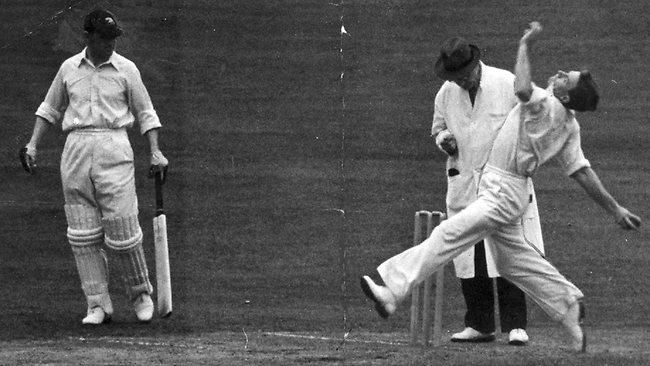
Top 10 Australian fast bowlers of all time
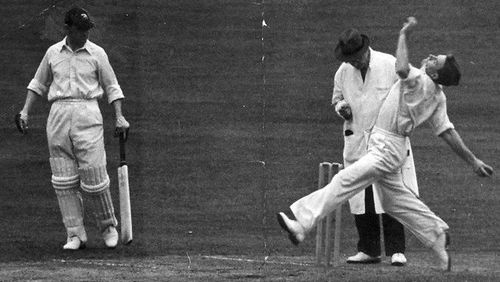
Australia has produced some brilliant cricketers over the years across all departments.
The one thing which Australia has always had is a strong pace bowling attack. Whether it is in Tests, ODIs or T20Is, Australia has always had pacers who could give even the greatest batsmen a run for their money.
Many terrific fast bowlers have come from Down Under, with some ending their careers as the finest exponents of fast bowling. So let’s take a look at the Top 10 Australian fast bowlers of all time.
10 Ray Lindwall
Ray Lindwall was one of the greatest pacers during the 1950s. A former rugby player, Lindwall was known for his immense pace and swing. He took 228 wickets from 61 Tests, including 12 five-wicket hauls. His best bowling in tests was 7/38 against India at Adelaide in 1948.
Lindwall was an essential entity of the Australian side of 1948 nicknamed The Invincibles. Along with Keith Miller, Lindwall formed a lethal fast-bowling partnership, which was difficult for most batsmen to play against. However, Lindwall’s peak was to come in England in 1953.
During a match against Surrey at the Oval, Lindwall was to bowl an over to Peter May, who was considered to be the finest batsman to emerge from the post-war era. Lindwall bowled three inswingers and as many outswingers in an over which May himself felt to be the best over in any level of cricket.
Lindwall had a brilliant Ashes that year, picking 26 wickets at an average of 18.84. He was also a pretty handy lower middle-order batsman, scoring two Test centuries.
9. Jason Gillespie
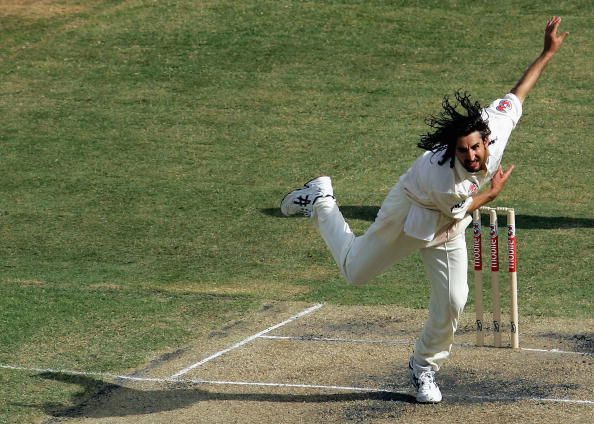
Jason Gillespie made himself a regular for Australia in an era which is probably their strongest in bowling terms. Despite the presence of the likes of Warne, McGrath and Lee, Gillespie managed to take 259 Test wickets which the 6th highest by an Australian bowler. He also has 142 ODI wickets to his name.
The tall, lanky pacer made his international debut in 1996. In 1997, he cemented his spot in the Australian Test team by picking up two five-wicket hauls. The latter one against England at Headingley is his career-best in Tests.
In ODIs, Gillespie has three five-wicket hauls to his name with his best bowling figures being 5/22 against Pakistan in 2002. He was also a part of Australia’s 2003 World Cup-winning squad before withdrawing after four games.
Dizzy was a pretty handy lower-order batsman as well, scoring a double-century against Bangladesh in 2006, having come in as a night watchman. The most amazing thing about Jason Gillespie is that he was able to pick up 400 international wickets despite going through injuries quite often during his career. However, these injuries eventually ended his international career in 2006.
One could only wonder where Gillespie would have been standing had his career not been plagued by so many injuries.
8. Mitchell Starc
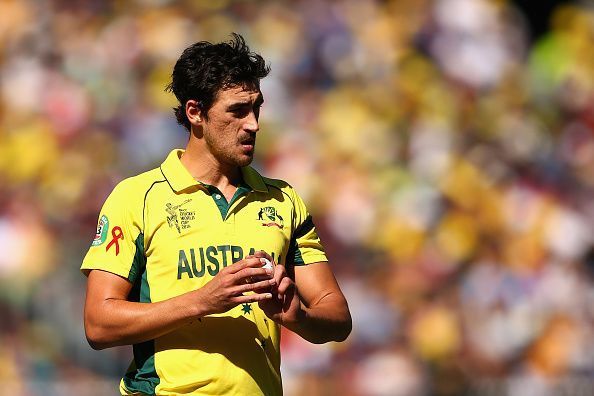
Probably one of the most lethal fast bowler in the world currently, Mitchell Starc has been Australia’s bowling spearhead over the past few years. Having debuted in 2010, Starc became a regular for the Australian side across all formats.
Starc currently has 244 Test wickets, 178 ODI wickets and 43 T20I wickets. He has a total of 20 international 5-wicket hauls, 13 in Tests and 7 in ODIs. Starc is the fastest bowler to reach 100 ODI wickets, doing so in just 52 innings.
He is known for his incredible pace and accuracy, and he has also maintained a more than decent sheet in T20Is.
Starc’s finest moment with the Australian team was during the 2015 World Cup where he was the Man of the Tournament and the joint highest wicket-taker with 22 wickets and an economy of just 3.58. He is also a pretty handy lower-order batsman with more than 1000 Test runs including ten fifties.
7. Craig McDermott
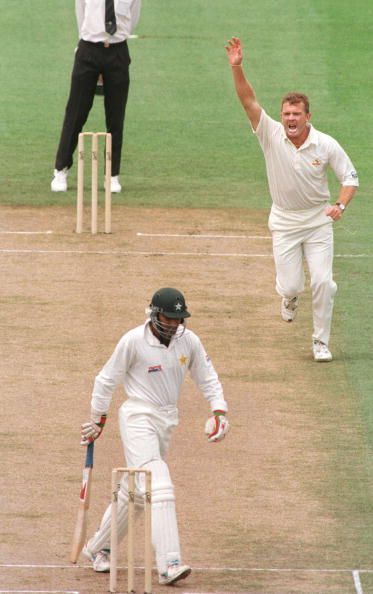
One of the finest Australian bowlers ever, Craig McDermott was one of the most feared bowlers in the world during the late 80s and the early 90s. McDermott made his Test debut for Australia in 1984 and soon became a regular for the Australian team.
Well known for his pace and outswing, McDermott took 291 Test wickets that included 14 five-wicket hauls and two 10-wicket hauls. His best bowling figures in Tests was the 8/97 against England at Perth in 1991. Most of McDermott’s exceptional bowling performances came against England including 8 of his 14 fifers in Tests.
In ODIs, McDermott took 203 wickets at an average of 24.71. McDermott played a crucial role in Australia’s victorious campaign at the 1987 World Cup. He was the top wicket-taker at the tournament with 18 wickets including his only 5-wicket haul in ODIs. McDermott took five wickets for 44 against Pakistan in the semi-finals.
However, McDermott’s career was cut short due to injuries during the mid-90s. These injuries eventually forced him to retire after the 1996 World Cup, when he was just 30.
6. Mitchell Johnson

Mitchell Johnson was one of the finest pacers during the late 2000s and early 2010s. He was always a bowler whom the opponent batsmen were wary of. Johnson made his debut in 2005 and a couple of years later, became one of Australia’s most crucial players.
In 2010, Johnson became the quickest bowler to take 150 Test wickets in terms of time (2 years and 139 days). Johnson is Australia’s 4th highest Test wicket-taker with 313 wickets including 12 five-wicket hauls. 8/61 against South Africa are his best bowling figures in the format.
In ODIs, Johnson has 239 wickets to his name, including three five-wicket hauls. 6/31 against Sri Lanka is his best bowling figures in ODIs.
He was in Australia’s squad for the 2007 World Cup but didn’t play a single match. In the 2011 World Cup, Johnson picked up ten wickets as Australia were knocked out in the quarter-finals. Johnson helped Australia win their 5th World Cup title at the 2015 World Cup, picking 15 wickets at an average of 21.73.
Johnson was in Australia’s Champions Trophy-winning squads of 2006 and 2009, picking five wickets in the former and four in the latter.
In T20Is, Johnson has taken 38 wickets. He helped Australia reach the final of the 2010 ICC World T20 where he took his career-best T20 figures of 3/15 against Sri Lanka.
Johnson is also a pretty handy batsman with more than 2000 runs in Tests including a century. He also has two fifties in ODIs. Johnson was adjudged the ICC Player of the Year on two occasions - in 2009 and 2014.
5. Charlie Turner
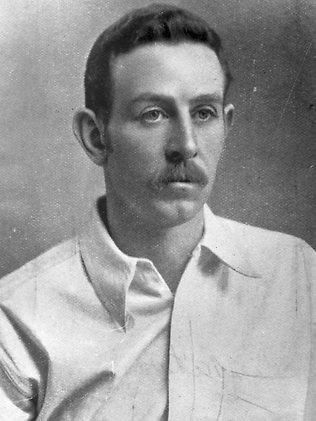
Charlie Turner is considered to be one of the greatest fast-bowlers of all-time, and undoubtedly the greatest fast-bowler during the 19th century. Turner was known for his long run-ups, his variation of pace and his accurate line and length.
In an international career lasting from 1887-1895, Turner picked up 101 wickets from just 17 Tests at an incredible average of 16.53. He took 11 five-wicket hauls and two ten-wicket hauls with 7/43 his best bowling figures. Turner became the first-ever player to take 100 wickets in international cricket.
Turner’s ability to bowl brilliantly even on the most treacherous of pitches earned him the nickname “Terror Turner”. Turner’s bowling figures of 12/87 against England at Sydney in 1887 remains the best match bowling figures at the SCG.
4. Jeff Thomson
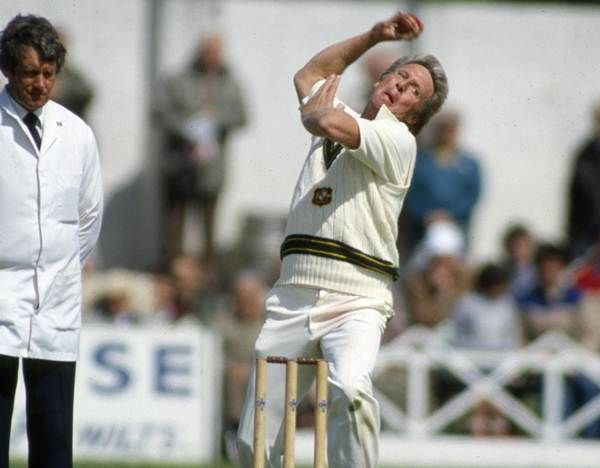
One of the most feared bowlers in the history of the sport, Jeff Thomson, did not have the best of starts to his Test career. Making his debut against Pakistan in 1972, Thomson returned with match figures of 0/110. He was reported to have played despite having a broken bone in his foot.
He did not play first-class cricket for nearly two years. However, he returned to the national setup during the 1974-75 season. During the Ashes, Thomson produced some scintillating spells including a spell of 6/46. That series made him a star, and he became a regular for Australia.
Thomson was noted for his incredible pace and is widely regarded as one of the fastest bowlers in the history of the sport. Along with a certain other pacer who we will discuss later in this article, Thomson formed what is still known to be one of the most lethal bowling pairs in international cricket.
Thomson showed most of his prolificity in Tests, picking up 200 wickets. In ODIs, he picked up 55 wickets. He represented the Aussies in the 1975 and 1983 World Cups, picking up a combined seven wickets.
3. Brett Lee
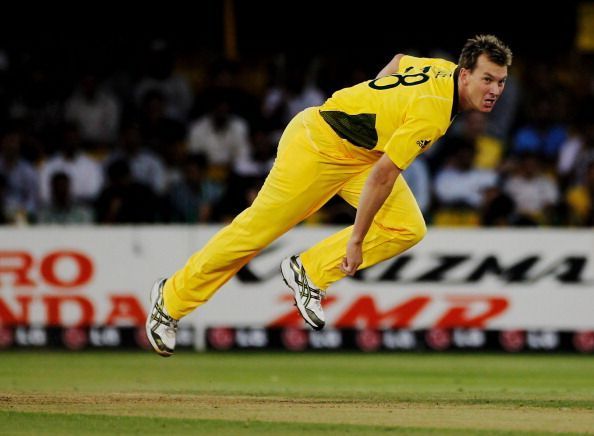
Another exceptionally fast bowler, Brett Lee is one of the quickest and most lethal bowlers that Australia has ever produced.
Beginning his career in 1999, Lee soon became an asset in the Australian setup as his ability to consistently bowl at a speed of 150 kmph. Lee did have a series of injuries due to stressing so much on his pace. This forced him to alter his strategy, and he did. However, he was still a nightmare for most batsmen.
In an international career lasting for nearly 13 years, Lee took 310 Test wickets including ten five-wicket hauls with 5/30 being his career-best figures. In ODIs, Lee is Australia’s second-highest wicket-taker with 380 wickets including nine five-wicket hauls with 5/22 being his best bowling spell in the format. He helped Australia win the 2003 World Cup where he was their top wicket-taker with 22 wickets including a hat-trick against Kenya in the Super Sixes.
This made him the first Australian and only the fourth bowler to take a hat-trick in the World Cup.
In T20Is, Lee has 28 wickets to his name. He is the first bowler to take a hat-trick in T20Is, doing so against Bangladesh at the 2007 ICC World T20. Lee’s quickest official delivery was clocked at 161.1 kmph against New Zealand in 2005.
2. Dennis Lillee
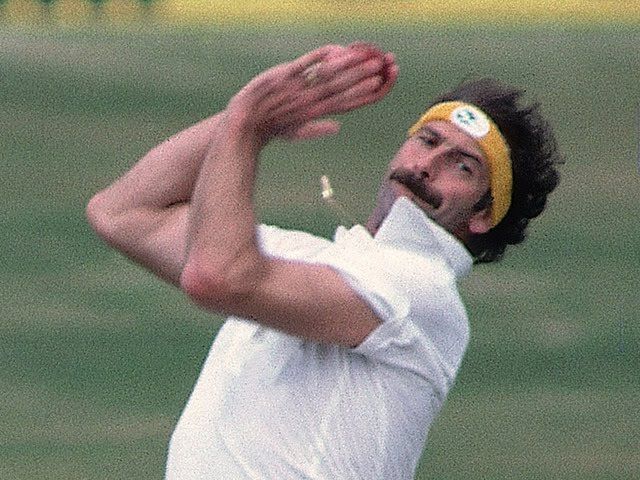
One of the greatest pacers to have graced a cricket pitch, Dennis Lillee did not have the easiest of starts to his international career. A string of back problems nearly ended his career. However, Lillee’s never-say-die attitude brought him back to form and fitness, and he became one of the most feared bowlers during the 70s and early 80s.
Lillee and Jeff Thomson formed one of the deadliest fast-bowling pairs of all-time during the 70s. Lillee was an absolute nightmare for even the best of batsmen. He took over Richie Benaud as the highest Aussie wicket-taker in Tests in 1981. He also went on to overtake Lance Gibbs as the highest wicket-taker in Tests. Ironically, he bettered Gibbs’ record against West Indies.
Besides Thomson, Lillee also formed a formidable bowler-wicket-keeper/fielder partnership with Rod Marsh. The duo took 95 dismissals in 69 Tests, a record which still stands today. Lillee took 355 Test wickets, including 23 five-wicket hauls with 7/23 being his best figures in the format.
In ODIs, Lillee wasn’t as prolific as he was in the longer format. However, he still managed to take 103 wickets including a five-wicket haul 5/34 against Pakistan at the 1975 World Cup.
1. Glenn McGrath
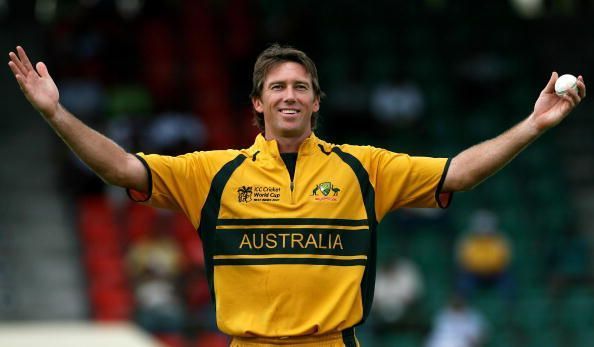
You may have figured it out by now that who takes the pole position here. Of course, it’s Glenn McGrath. Probably the greatest fast-bowler of all-time, Glenn McGrath was one of the significant reasons behind Australia’s domination in the mid-90s and mid-2000s.
McGrath was never a particularly speedy bowler, but his accurate line and length was what made him a wicket-taking bowler. McGrath is the highest wicket-taking pacer in Tests with 563 wickets including 29 five-wicket hauls and three ten-wicket hauls. He is one of the few bowlers to have taken two 8-wicket hauls in Tests with 8/24 against Pakistan at Perth being his best figures in the format.
In ODIs, McGrath is Australia’s leading wicket-taker with 381 wickets including seven five-wicket hauls. A spell of 7/15 against Namibia at the 2003 World Cup is his bets in the format. McGrath helped Australia to their hat-trick of World Cup wins from 1999-2007.
At the 1999 World Cup, he was the second-highest wicket-taker with 18 wickets. In 2003, he was the third-highest wicket-taker with 21 wickets. In 2007, he retired by taking 26 wickets in the tournament, the highest in any single tournament. McGrath was eventually adjudged the Player of the Tournament. Glenn McGrath is the highest wicket-taker in World Cup history with 71 wickets.
Indeed, he is the greatest fast bowler Australia has ever produced.